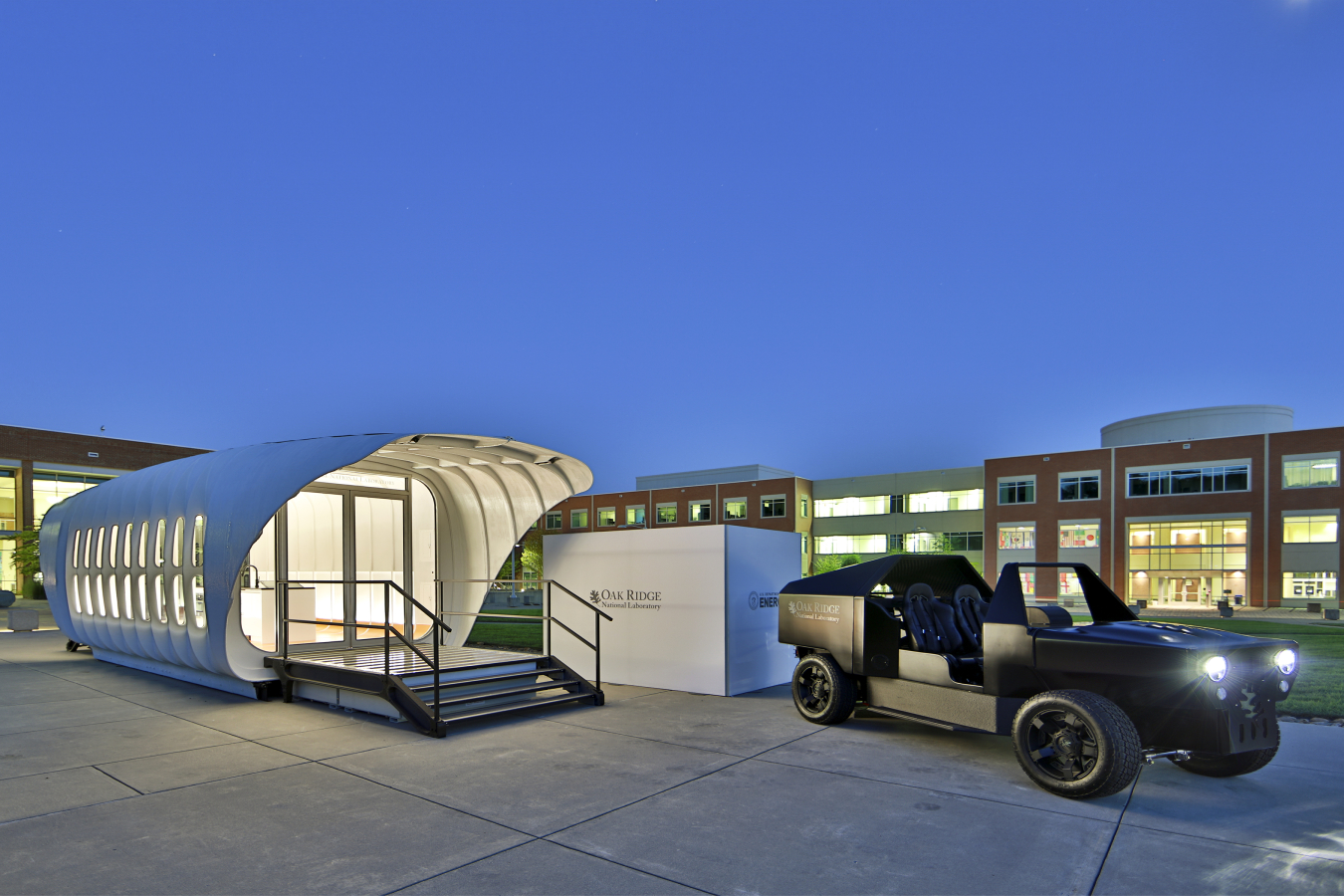EERE Success Story—ORNL Unveils 3D-Printed Home and Vehicle with the Unique Ability to Power One Another
November 17, 2015
In September, the Department of Energy’s Oak Ridge National Laboratory (ORNL) announced successful efforts of the the lab’s Additive Manufacturing Integrated Energy (AMIE) demonstration. The nine-month project reached its goal of 3D-printing an alternative fuel vehicle and a paired building structure, both featuring the unique ability to power one another.
The results of the project were unveiled at the Office Energy Efficiencyand Renewable Energy’s (EERE) first-ever Industry Day, hosted by ORNL, where the natural gas-hybrid vehicle and solar-powered building were constructed. The event was attended by the Department of Energy’s Assistant Secretary for EERE, Dr. David Danielson.
The 210-sq. ft. home measures 38x12x13 ft. and the hybrid printed vehicle, powered by natural gas, were both printed using additive manufacturing via a large-scale 3D printer at ORNL’s Manufacturing Demonstration Facility. The building was constructed with the help of ORNL’s Governor’s Chair for Energy and Urbanism, and the addition of industry partners including Owings, Merill, and Skidmore, and Clayton Homes. The house includes several energy saving features, such as recessed windows and a reflecting white exterior. It also has unique architectural details, including curved vaulted ceilings, which can be difficult to build; however, in this case, they were simply part of the same print job.
Thanks to wireless technology developed by ORNL researchers, the home and vehicle can charge one another. The idea is that the house powers the car on days when the sun produces more than enough energy to top off the house’s batteries. When the house requires more power than it has, because it is cloudy or it is using too many appliances, the electric generator in the car supplies the necessary power. The wireless power between the house and the car has a target efficiency of over 98%. And both the house and the car are designed to test other experimental technologies, such as a hydrogen fuel cell, as engineers learn from this platform.
The innovation is a great step forward for additive manufacturing which builds one layer at a time, but usually on much smaller scales. ORNL also famously 3D-printed a Shelby Cobra using a large-scale polymer 3D-printer. The Secretary of Energy Earnest Moniz and President Barack Obama have both seen the vehicle in person.
This project is a result of collaboration between EERE’s Buildings Technologies Office (BTO), EERE’s Advanced Manufacturing Office (AMO) and 19 industrial and institutional partners. ORNL’s Manufacturing Demonstration Facility (MDF) is supported by AMO. For more information on advanced manufacturing projects supported by EERE’s Advanced Manufacturing Office please visit http://energy.gov/eere/amo/advanced-manufacturing-office.
The Office of Energy Efficiency and Renewable Energy (EERE) success stories highlight the positive impact of its work with businesses, industry partners, universities, research labs, and other entities.

